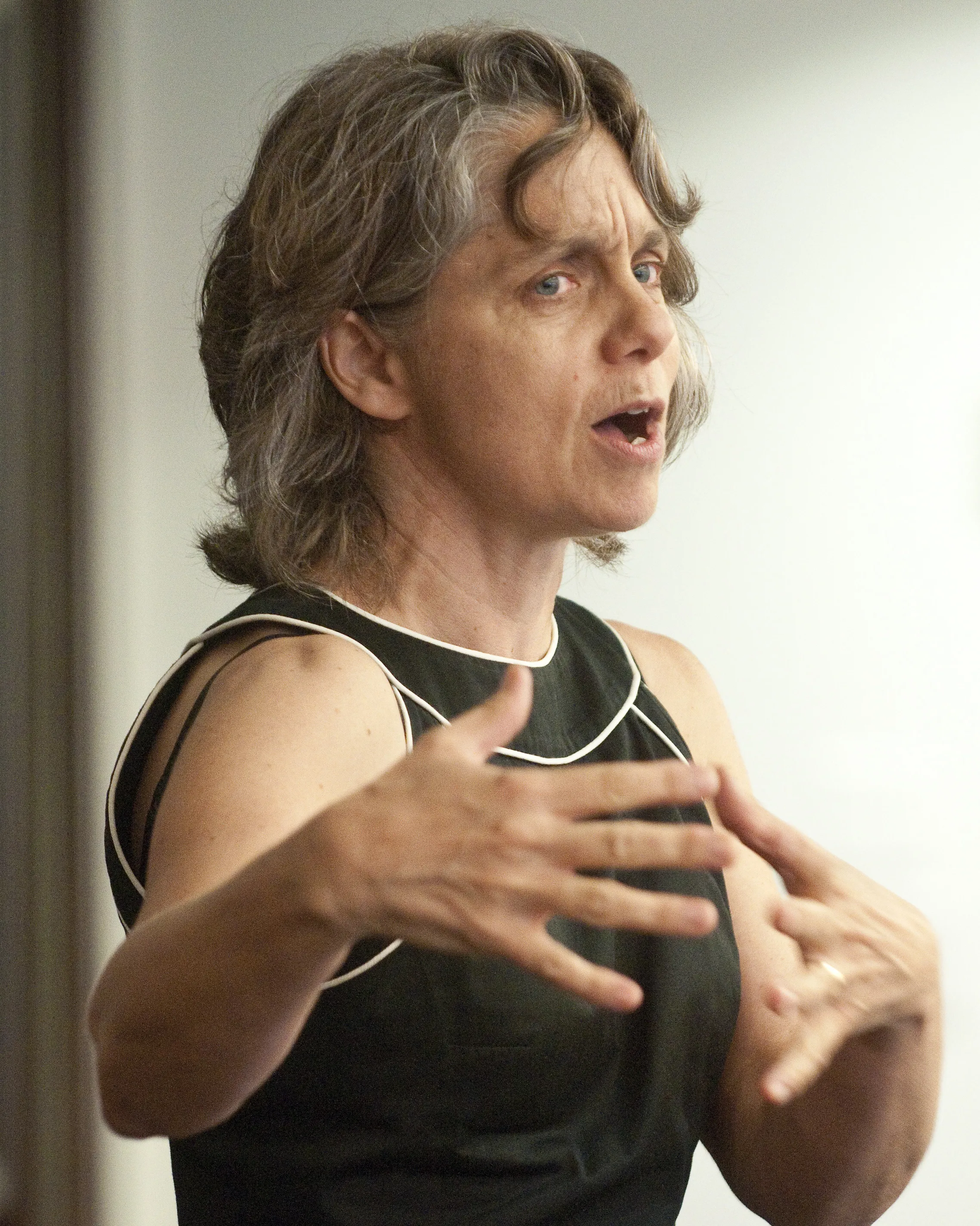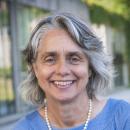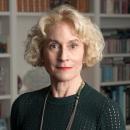Future Women Leaders Come to Chicago

When the physician finished her speech, the young women scrambled to her – one even hopping over a desk – with cameras in hand. They wanted to remember their moment with Melissa Gilliam, MD, MPH, Chief of Family Planning and Contraceptive Research and head of Pediatric and Adolescent Gynecology at the University of Chicago Medical Center.
That enthusiasm was evident throughout the day as the 30 students visited the Law School as part of a State Department program titled, “Educating Tomorrow’s Global Women Leaders.” The students were hosted by St. Mary’s College in Notre Dame, Ind., where 10 of the women attend school. The other 20 came from Egypt, Libya, Tunisia, Mongolia, and Myanmar.
Their day at the Law School was hosted by Professor Emily Buss and included a talk from Professor Martha Nussbaum, whose writings the students had read in preparation. They also visited with Hyde Park’s State Representative Barbara Flynn Currie (D-Chicago).
Buss spoke briefly to the young women about how a career in law can be a way to work for social justice. And Nussbaum talked about the importance of measuring human welfare in an interdisciplinary way that uncovers inequality of wealth and opportunity, especially for women. This is called the “human development and capability approach,” and Nussbaum is a leader of an academic association dedicated to its study.
“I think the central problem of development is women’s equality,” Nussbaum said. Measuring family well-being as a unit is problematic because it assumes the head of household – often a man – will distribute resources fairly, she said.
“It always makes sense to ask about each person’s opportunities.”
One thing Nussbaum said especially resonated with student Bulgansaikhan, 20, from Mongolia. (The State Department requested the students’ last names not be published. This program is part of the agency’s Study of the United States Institutes for Student Leaders.) Bulgansaikhan appreciated the idea that “the nation’s great wealth is its people,” and that quality of life cannot be thrown aside for the sake of saving money, she said.
“That is happening in my country,” Bulgansaikhan added. “My concern is we do both things – develop youth and develop the economy.”
Several of the young women are in medical school in their home countries, so they were especially interested in Gilliam’s talk. She discussed the growing number of women in medicine in the U.S., but said the lack of women in leadership positions, such as clinical chairs, remains a problem. She also outlined her extensive work trying to prevent teen pregnancy and sexually transmitted infections. A medical student from Tunisia asked the accomplished Gilliam if she had ever failed.
“I fail all the time. It can be devastating,” Gilliam said. “But you pick yourself up and you try again.”
Representative Currie discussed the changes she has seen since she joined the legislature in 1979. Many more women have been elected, and laws against domestic violence and sexual assault have been passed. Currie encouraged the young women to work together and try to forget about the so-called glass ceiling.
“We all build on the successes of one another,” she said. “I’m counting on all of you to forget about those barriers and mental blocks and just go for it.”
Ahlem, 22, from Tunisia, said the speakers inspired her “to have a project for Tunisia.” She’s thinking of a combination orphanage/retirement home, she said.
The purpose of the five-week program is to increase understanding between international students and Americans, said Professor Mana Derakhshani, who teaches modern languages and intercultural studies at St. Mary’s. She brought the students to the University of Chicago on July 6 so they could experience the academic environment and one of America’s biggest cities.
The students spent the weekend sightseeing in Chicago at the Jane Addams Hull-House Museum and the DuSable Museum of African American History. They then headed east to the National Women’s Hall of Fame in Seneca Falls, N.Y., the Harvard Graduate School of Education, and the United Nations in New York. From there, they traveled to Washington to meet other young women interested in leadership before flying home to their respective countries.

